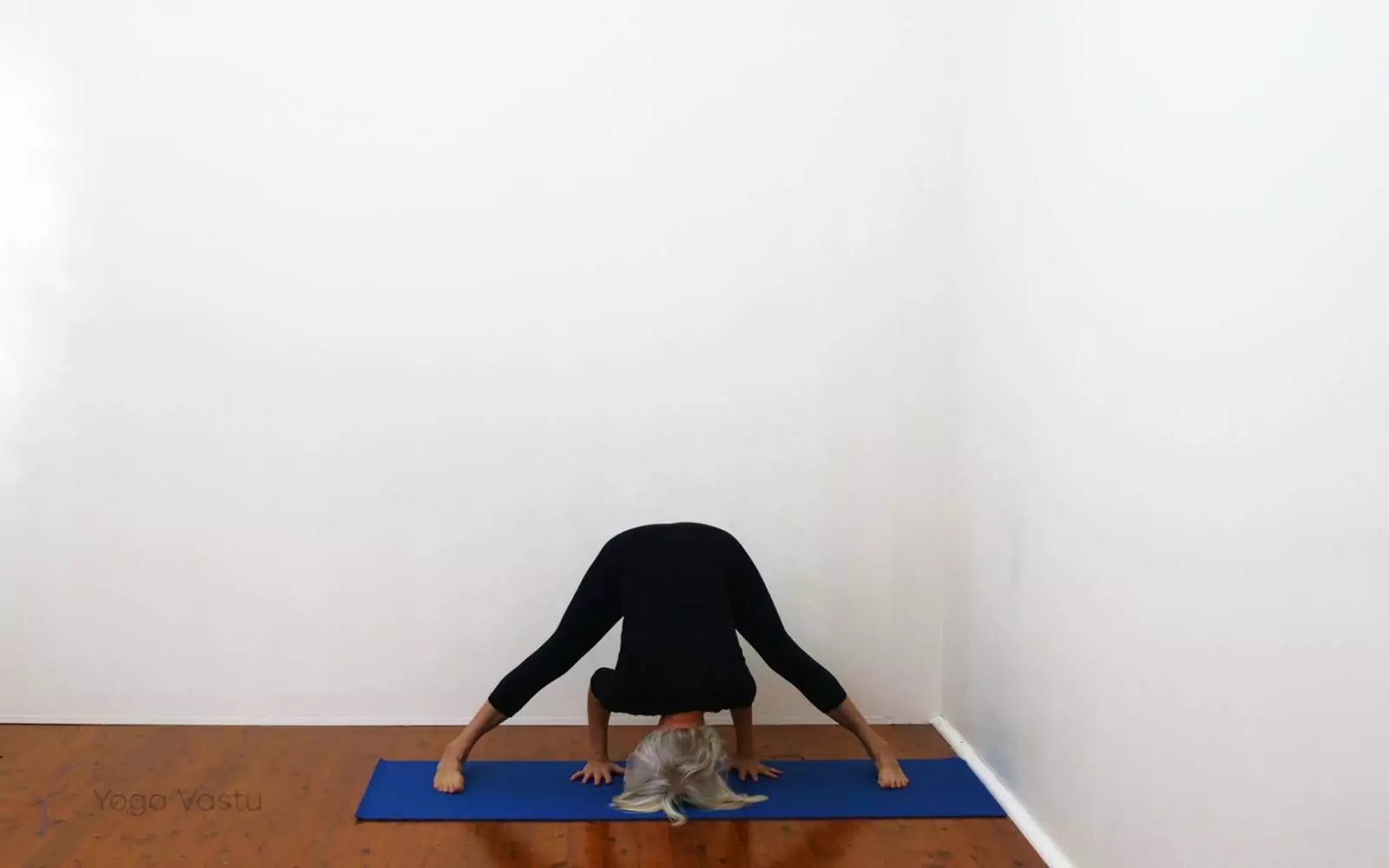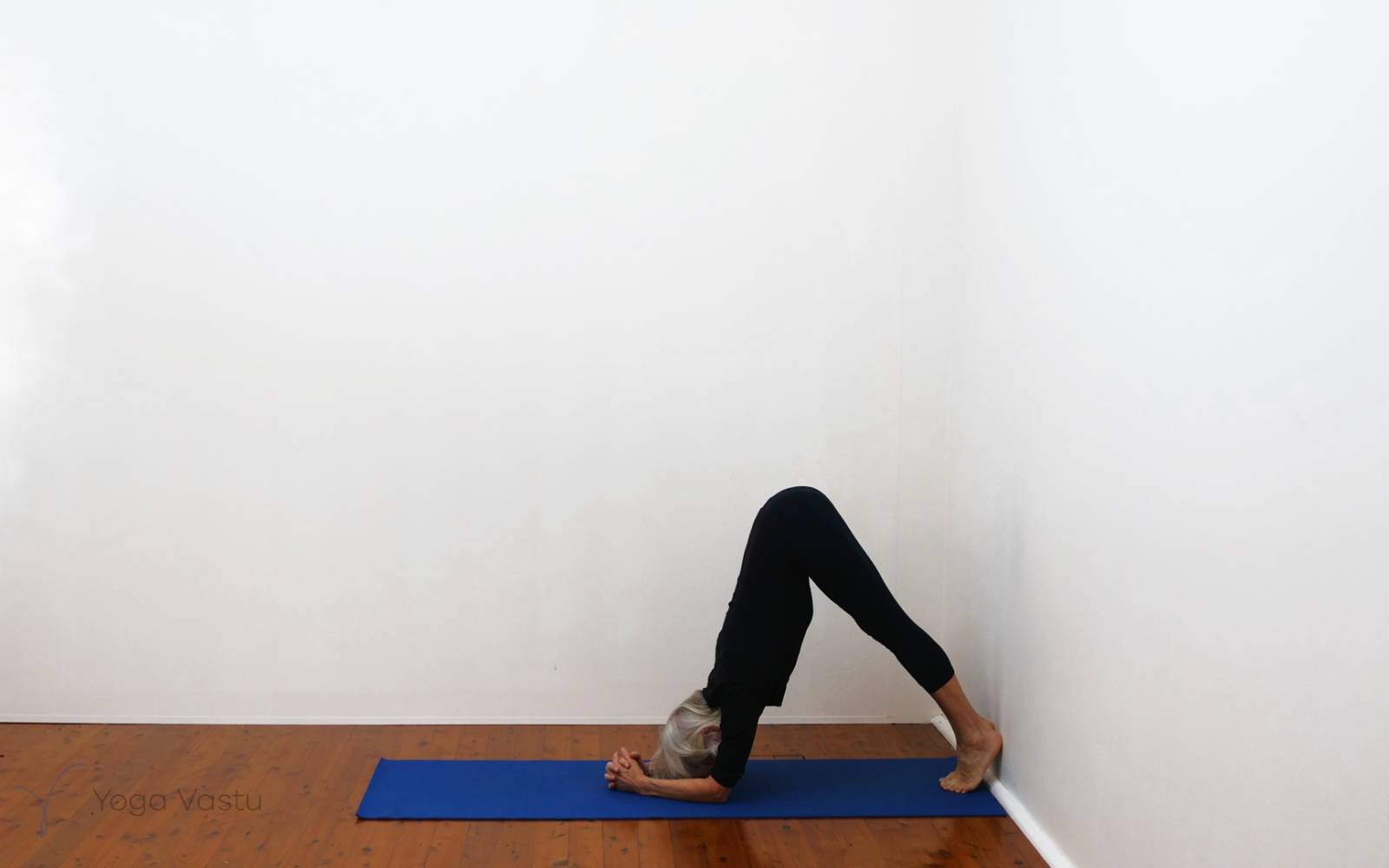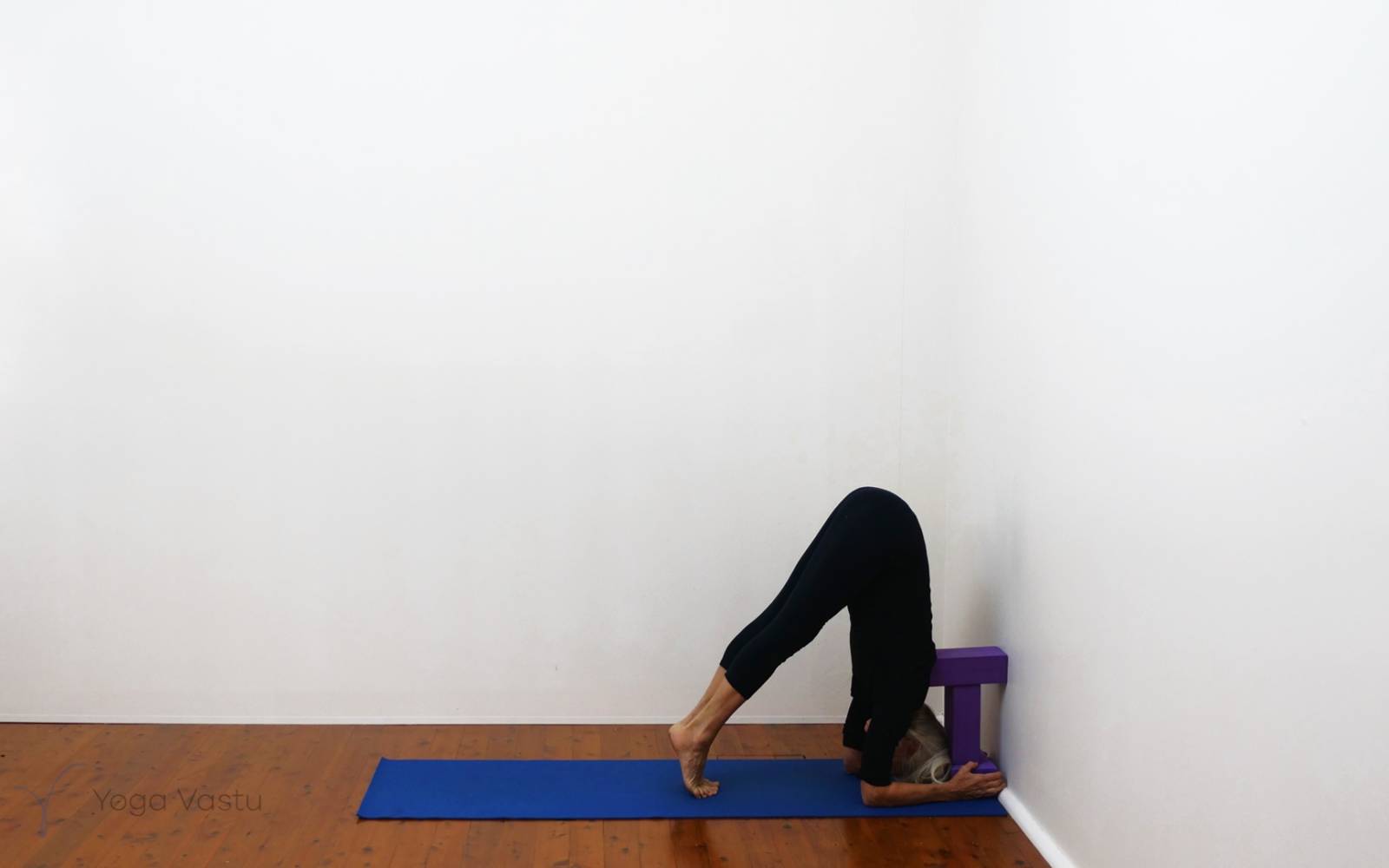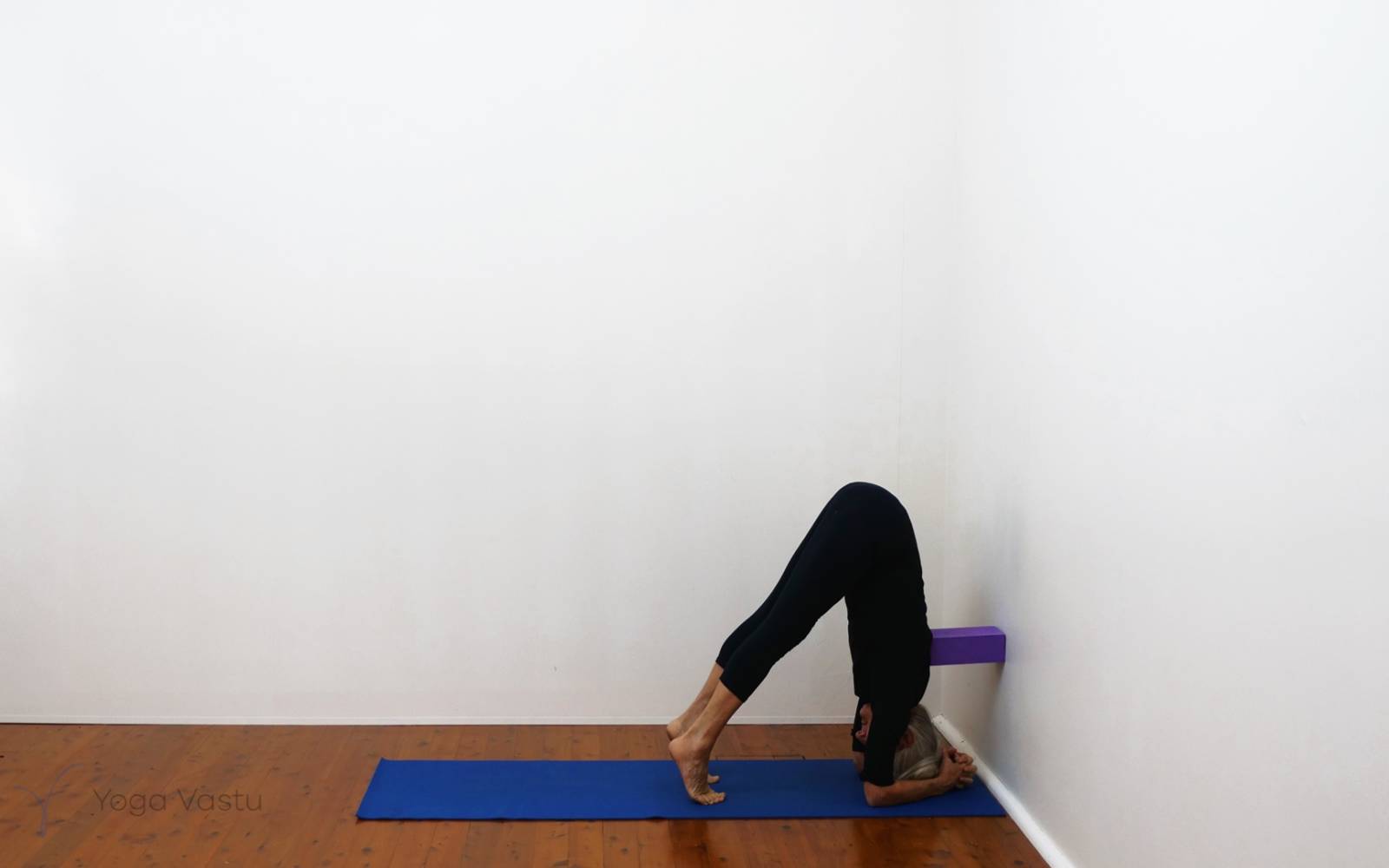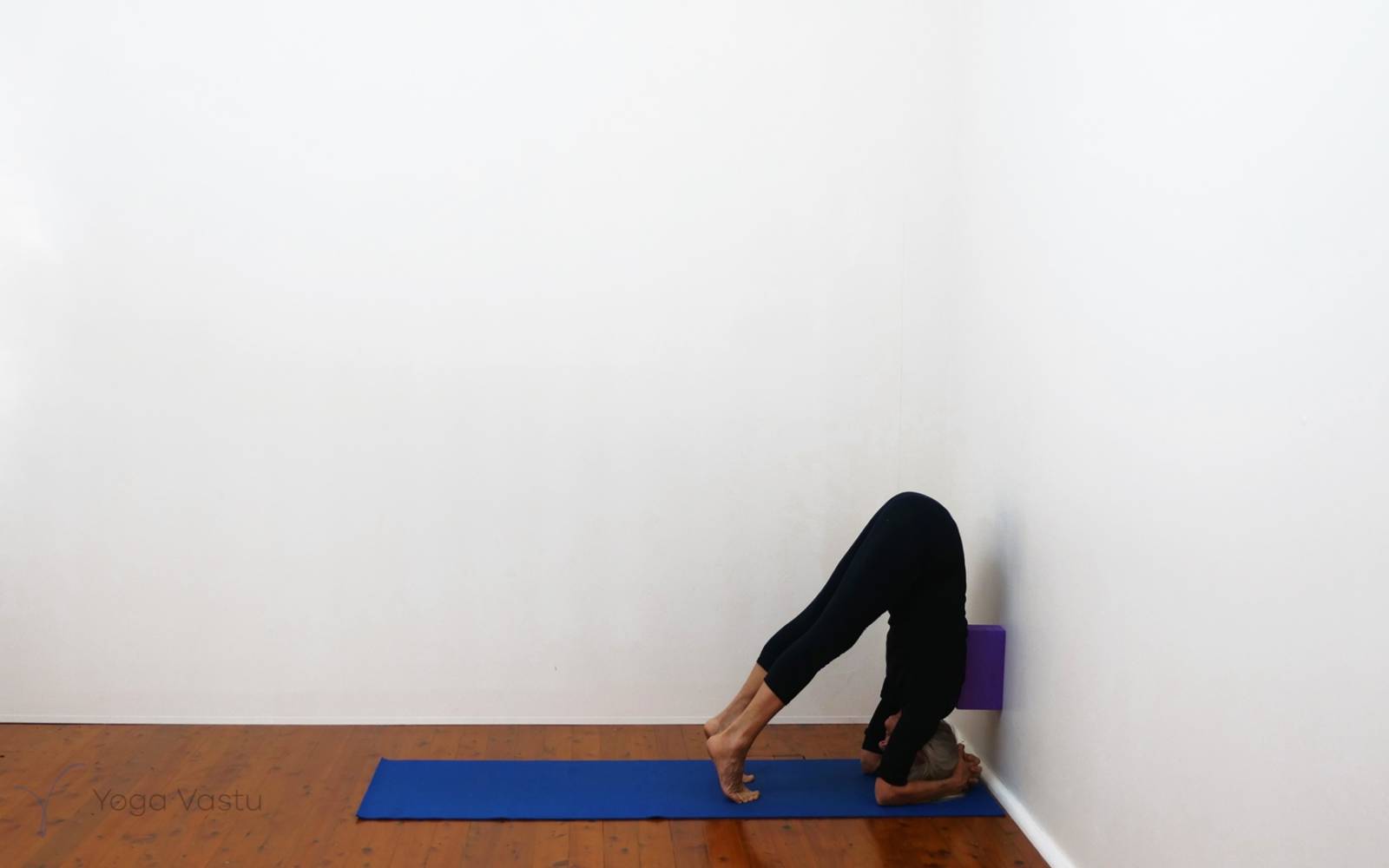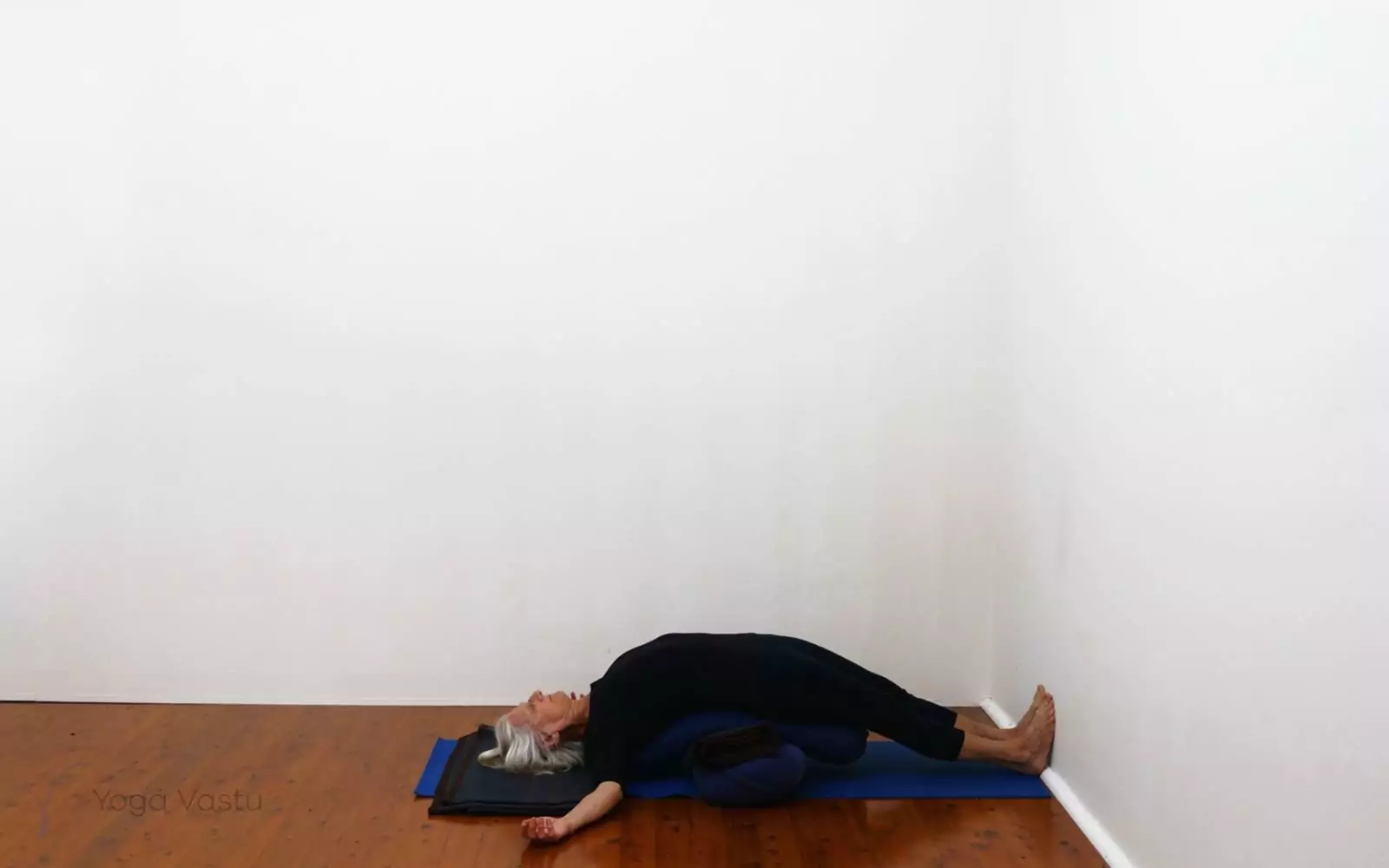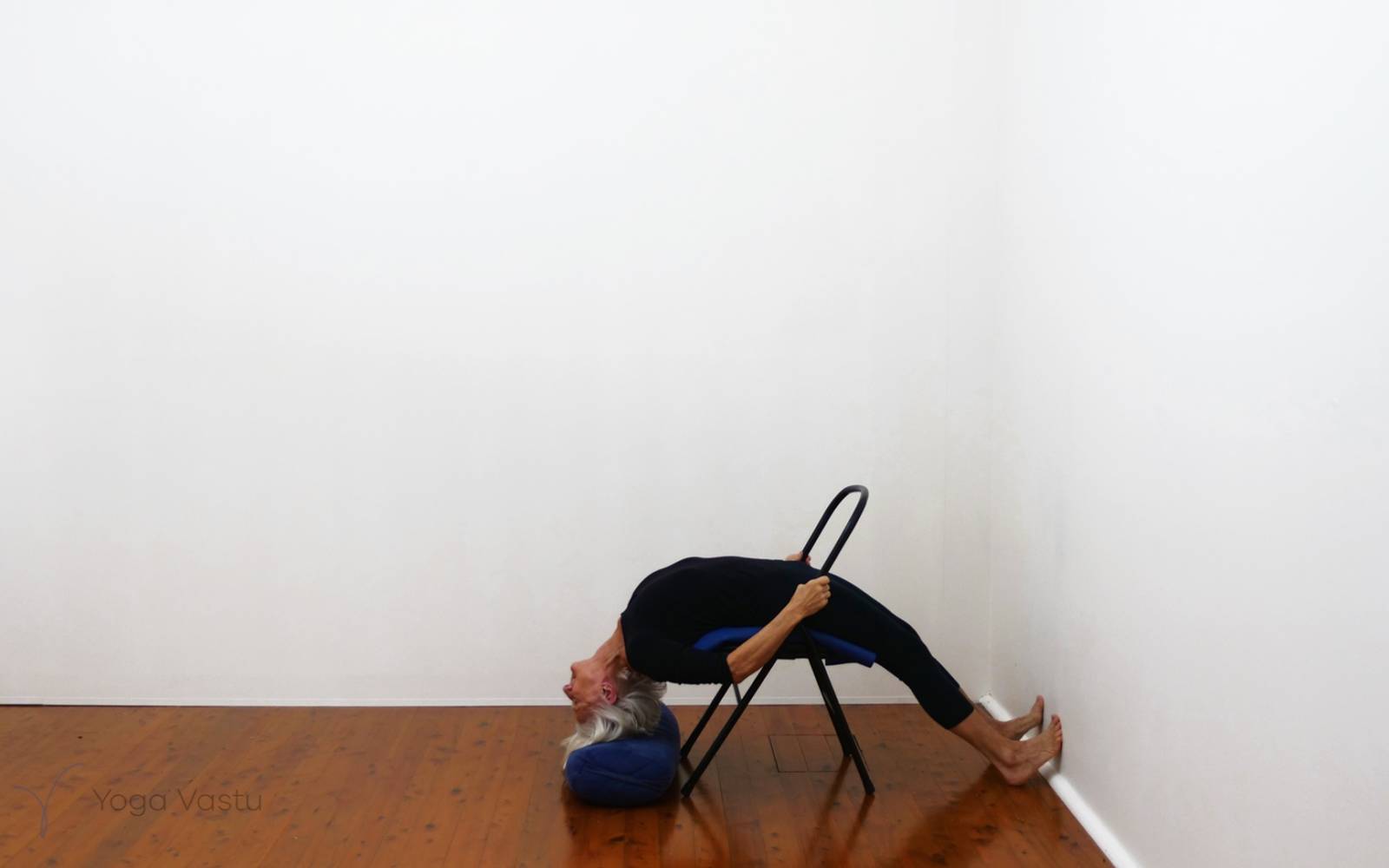These first options are for those less experienced with Headstand or who are unable to do a full inversion due to neck problems.
Prasarita Padottanasana – the wide-legged forward bending standing pose. This brings the head below the heart, assisting circulation and leg stability. This pose also helps us get accustomed to being upside down.
Headstand preparations – using blocks. These help us understand the importance of keeping the upper back ribs and shoulder blades engaged and going in towards the front chest. We are generally also able to stay a little longer in these preparatory poses with the help of the different block placements.
1. Three blocks placed near the wall in a tower shape. These form the support for the upper thoracic spine as we lift up the hips in headstand preparation.
2. Bend the elbows about a hand away from the wall, and place a block lengthways into the wall and walk in until the back finds the block. Then place the hands in Head Balance. Head off the floor.
3. Go close to the wall onto the elbows, place the bring lengthways against the wall for a fuller spinal support as we take the head closer to the floor in this supported variation.
Unsupported Headstand preparations:
These next two poses help to teach the importance of weight-bearing through the arms and how to lift the shoulders away from the neck to remove excess loading onto the neck itself. These two poses are preparatory for Headstand, but they can also be used as alternatives when avoiding placing weight onto the head and neck.
Both are good for keeping strong and stable in the arms and keeping good bone density in the upper skeletal structures.
1. Feet against the wall, hands interlocked and raising the hips up, head releasing towards the floor.
2. Same arm position, but this time walking up the wall, increasing the experience of weight-bearing onto the arms.
Headstand alternatives for women during their Menstrual cycle or for when any student wants a more restorative and supported alternative to full Headstand.
1. Cross bolsters: Place two bolsters on your mat, one lengthways directly over the first horizontal bolster. Use an additional folded blanket for extra height as needed.
Lie back with full pelvis and back support, the head hanging back. Use blanket support for the neck as required. Feet to the wall, heels on the floor or on blocks if the back complains.
2. Chair Dvi Pada Viparita Dandasana (back arch over the chair). For more experienced students
Place the chair near the wall, and put a folded mat on the chair seat, with extra blanket height as needed. Sit with the legs going through the chair and place the feet against the wall, heels on the floor or on blocks. Slide back until the front edge of the chair seat comes a little below the shoulder blades. Place a bolster under the crown of the head for further support and hold the back of the chair with the hands, or slide the hands underneath the chair and hold the back legs.
Video stills from this sequence
